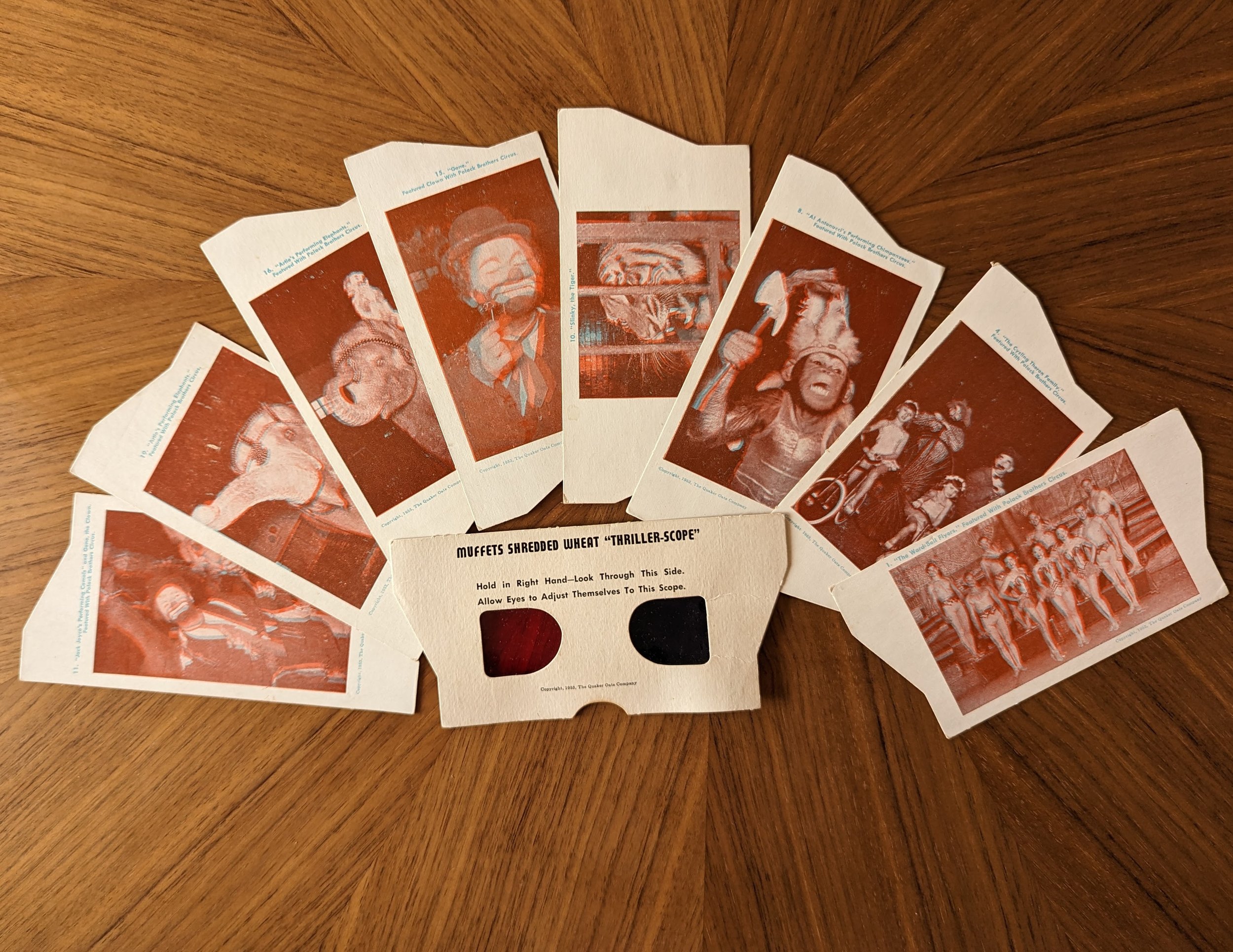Vintage Anaglyphs
Last updated with new entries February 23, 2025
Our collection of vintage stereo viewers includes a small vintage anaglyph sub-collection. Anaglyphs are where 2 stereo pair images — each a different color, one color for each eye — are overlapped. The overlapped image is then viewed with a pair of red/cyan glasses to produce a 3D effect. The glasses (which can also be red/green or red/blue combinations) filter the colors so that the correct image gets to the correct eye and gives the perception of depth.
While the anaglyphic method was discovered and used in the 1800s, it really took off in film and print in the 1920s. Some vintage anaglyph sets below come with “Macyscope” cardboard viewing glasses. Around the 1920s, Alfred Macy patented some improvements in the anaglyph process, founded an entity called MacyArt, produced the Macyscope anaglyph glasses, printed several anaglyph publications, and licensed others to print anaglyphs through a company called American Colortype.
Enjoy this trip down early- to mid-century anaglyph lane!
To scroll through each set of photos, use the right/left arrows on the sides or the thumbnails underneath each photo.
1920s | Cooperative Wholesale Society (C. W. S.) Magic Stereoscope
The C. W. S. started in the mid-1800s, supplying produce to co-operatives across England. They expanded to provide more than produce. These anaglyph images depict their various products. They eventually became what is known today as The Co-Operative Group.



1920s | E.R. Squibb & Sons Anaglyph Brochure
E. R. Squibb & Sons was founded in 1892 when Dr. Edward Robinson Squibb, a successful pharmacist, partnered with his sons, Edward and Charles. The company later merged with Bristol Meyers and is known today as Bristol Meyers Squibb. This brochure with anaglyph images advertises Squibb products including their dental cream. It comes with the Macyscope glasses.




1920s | Golf Anaglyphs in The Illustrated London News
The Illustrated London News ran a number of printed anaglyph features in their newspapers in 1924-1925. This October 31, 1925 issue features top golfer George Gadd demonstrating various golf techniques, all specially photographed for the anaglyph feature.


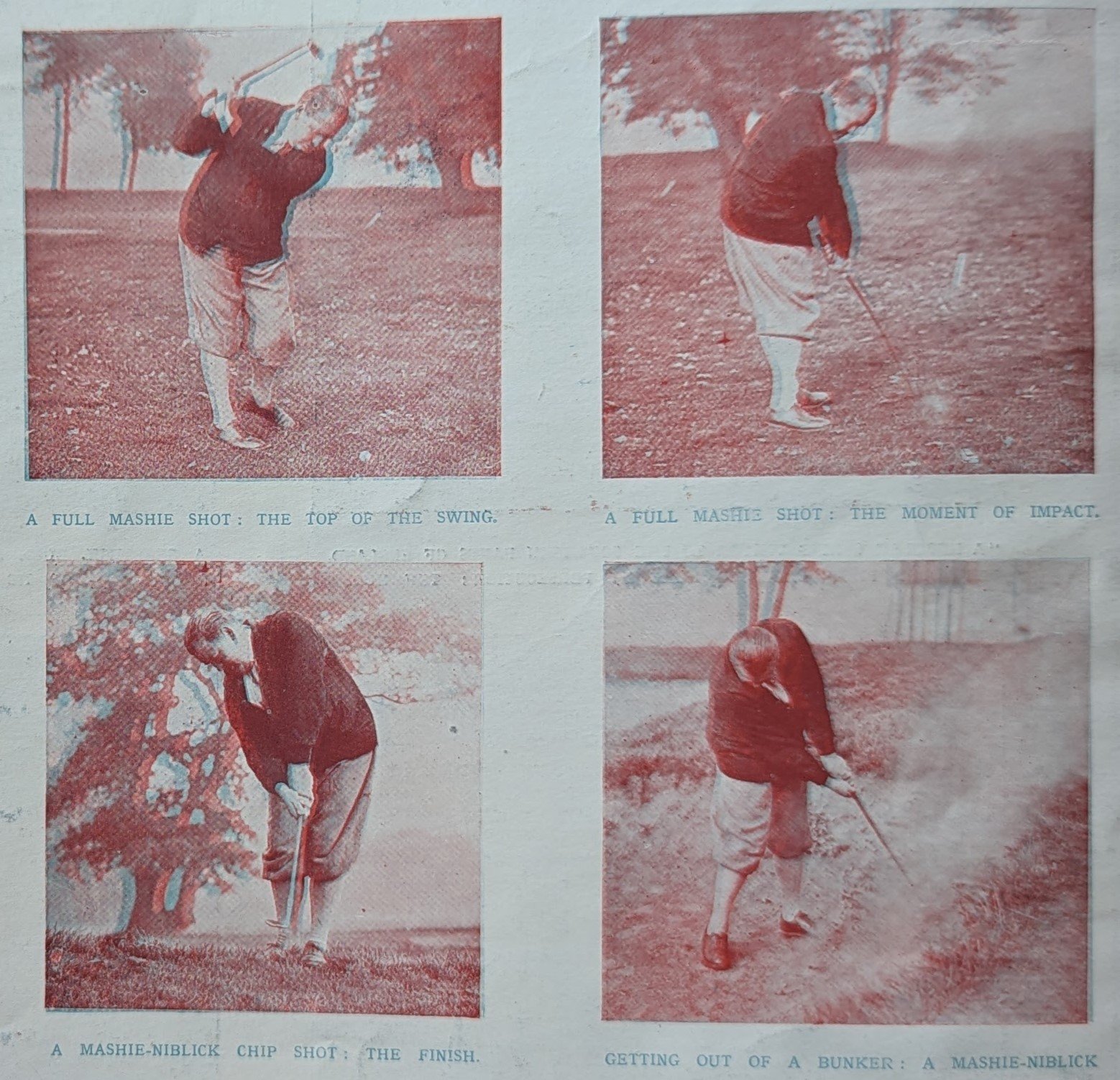

~1920-30s | Anaglyph Views of New York City
This is another anaglyph product from American Colortype that comes with a Macyscope. Since F. W. Woolworth Co is printed on the package, it was probably made to be sold in Woolworth stores.

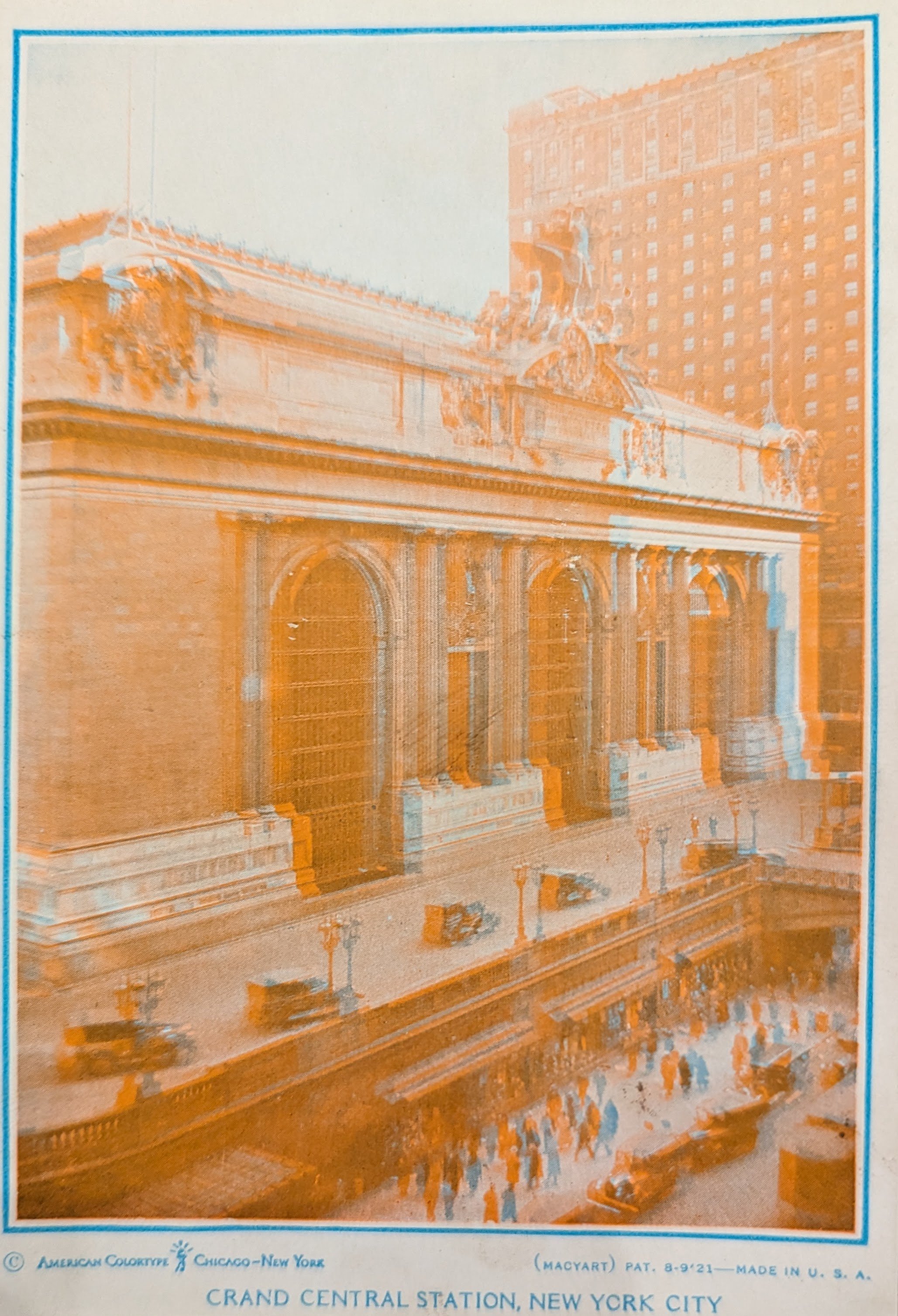





1930s | Mohawk Rubber Company
This anaglyph booklet from 1930 comes with custom glasses printed by MacyArt and designed to look like you’re peering through Mohawk Chief tires. They called them “Magic Mohawk Spectacles.” The booklet was intended for school children as “a trip across distant seas through foreign lands into the rubber country of the strange East and through the modern processes of tire manufacture at Akron, Ohio.” Using Native American imagery and tribe names as a logomark and branding for tires understandably wouldn’t pass the vibe check today.

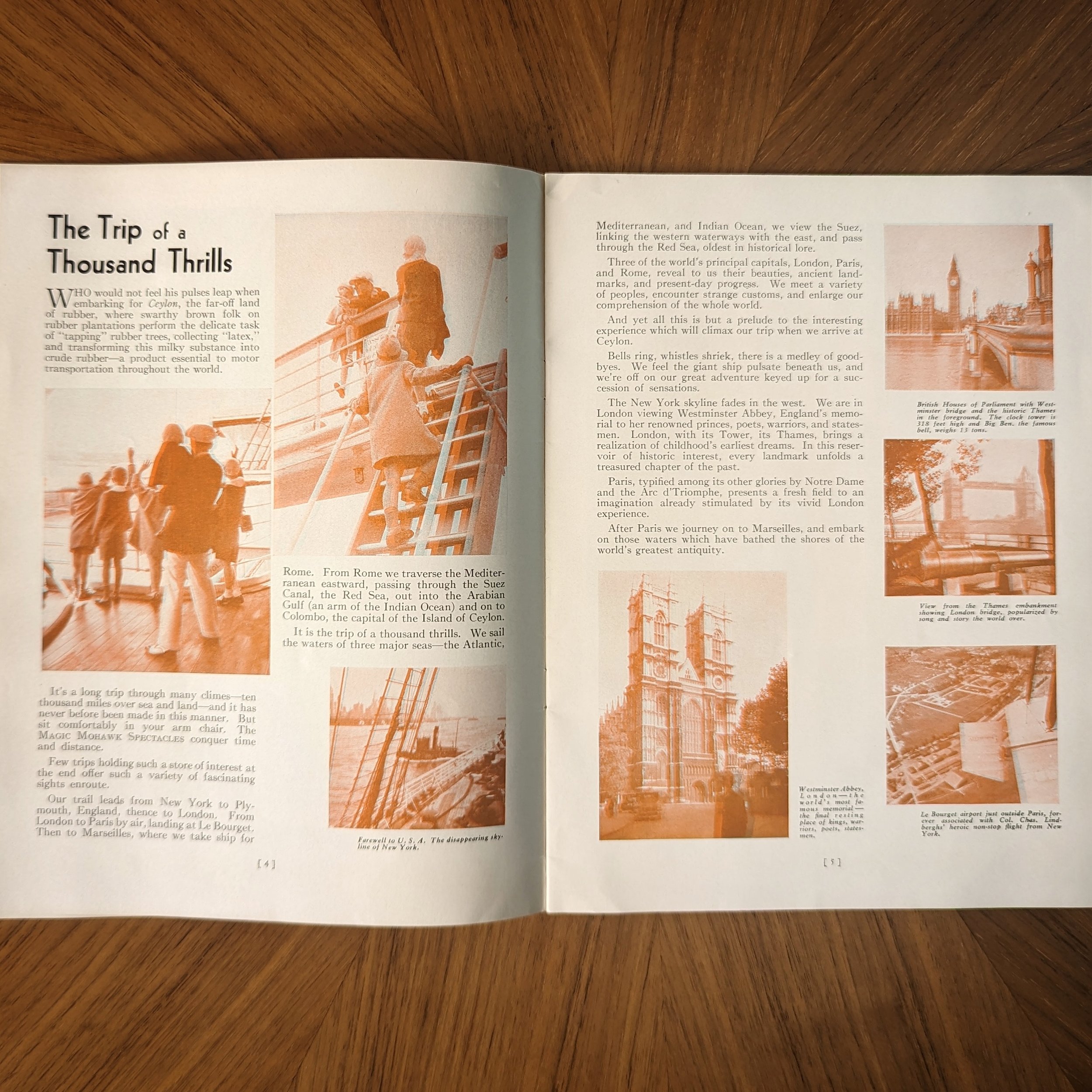







1933 Ford Motor Corp | MacyArt
In the early 1900s, Alfred Macy founded an entity called MacyArt to produce anaglyph glasses and publications. He also licensed others to print anaglyphs through a company called American Colortype. This promotional book, “Look Through the Eyes of the Engineer,” features anaglyph images of the new Ford V8 and was produced by MacyArt. The “Ford-a-Scope” 3D glasses were produced by American Colortype. This entry is also in our Cars in 3D blog post.

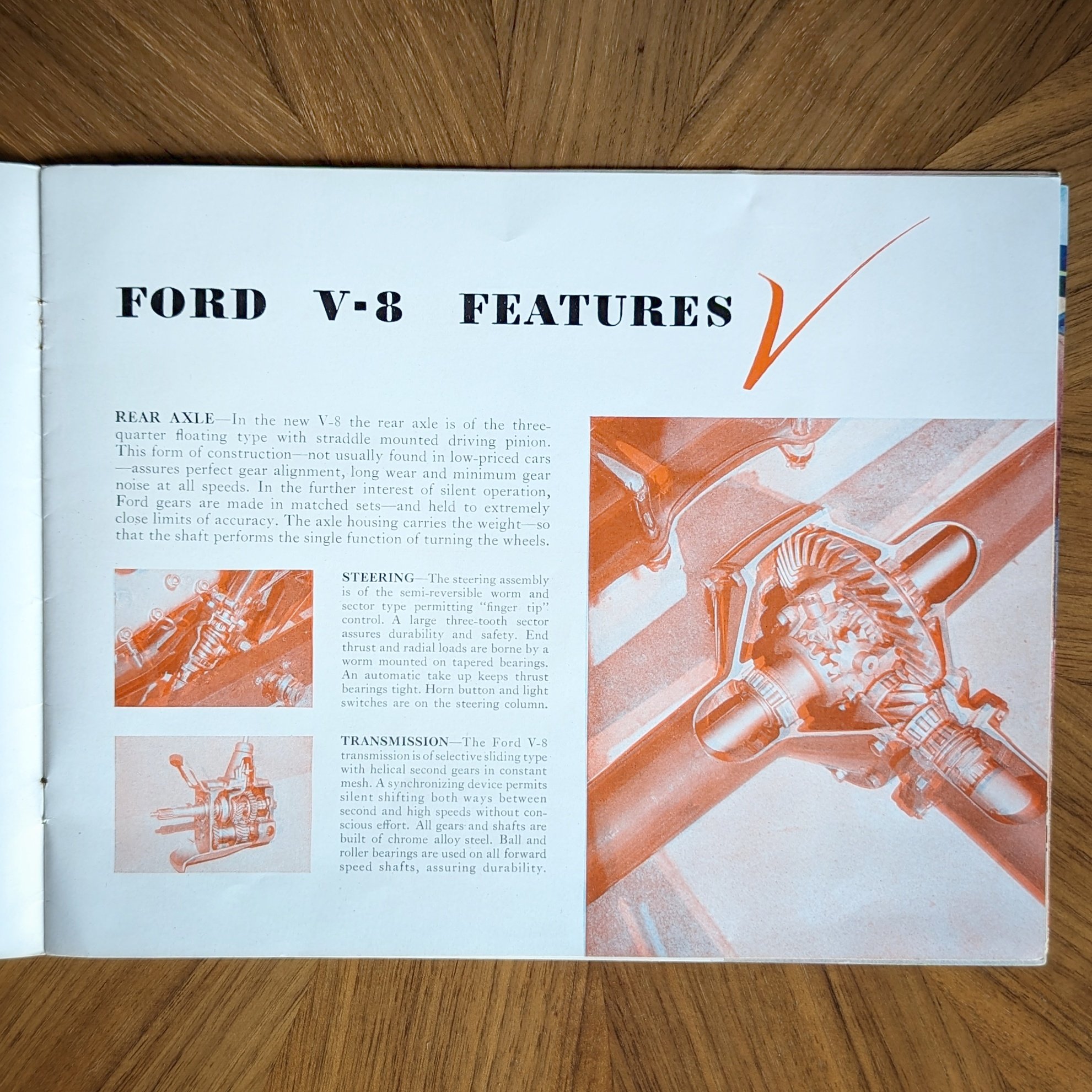




1933 Children’s Newspaper
The Children’s Newspaper (subtitled The Story of the World Today for the Men and Women of Tomorrow) was founded and edited by Author Mee. It was published every Thursday and ran from 1919 to 1965, educating children on world news and science. In the February 4, 1933 issue, a loose-leaf binder was given away along with a 4-page anaglyph insert and “Magic Spectacles.” In the following weeks, a new insert was provided (some were only 2 pages) that could be added to the binder.







1930s | Russian Anaglyph Zoology Educational Set
Uchpedgiza Stereo Factory produced this anaglyph set as a visual aid for a secondary school zoology course. Edited by Prof. M. Ya. Tsuzmera.




1930s | Stereovues of New York World’s Fair
This boxed set contains anaglyphs from the 1939 New York World’s Fair and a cool-looking pair of black 3D glasses. The box also serves as a mailer.



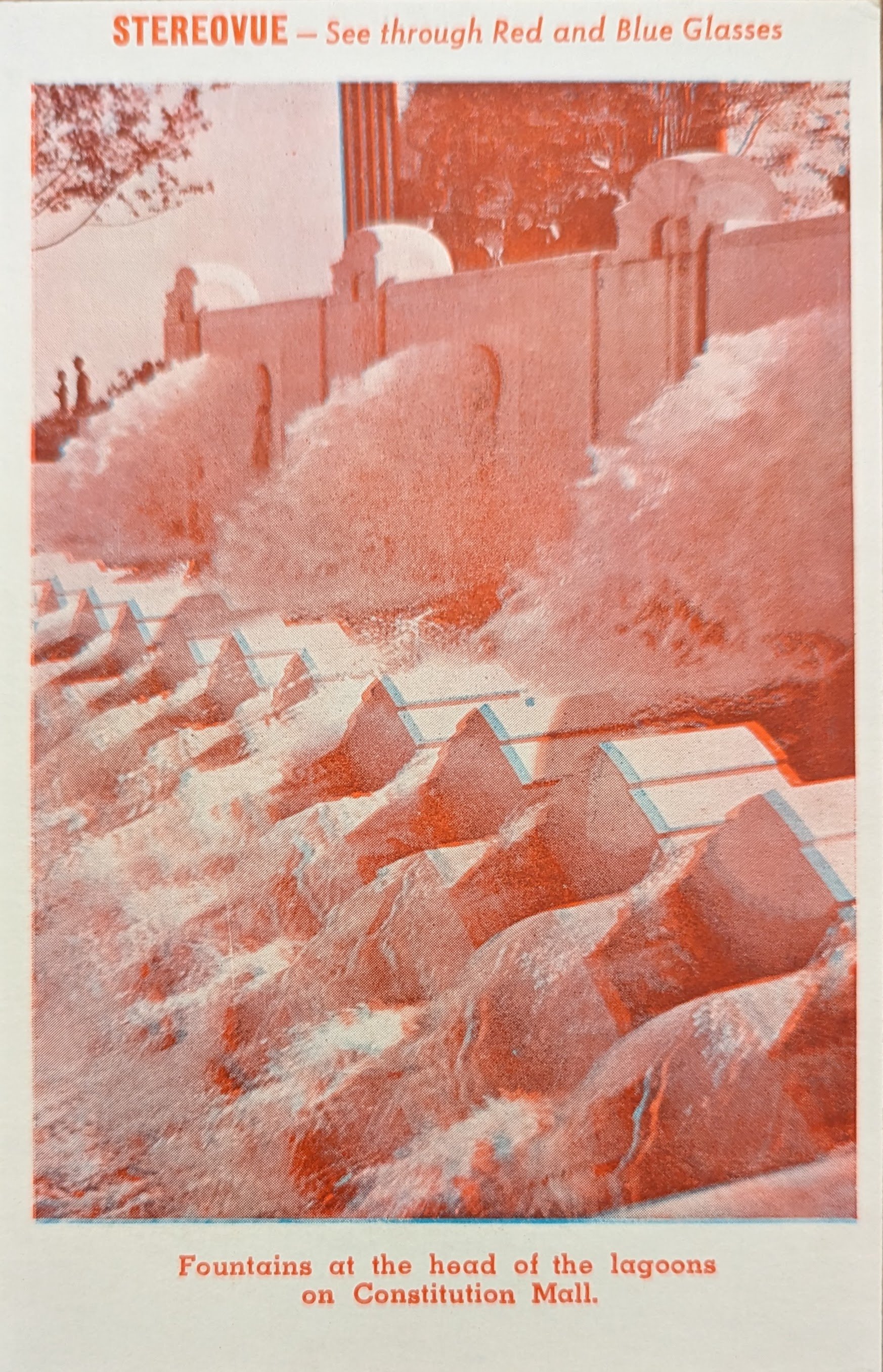



1930s | Anaglyph Views of a Century of Progress World’s Fair
This booklet contains anaglyph images of the 1933-1934 Century of Progress World’s Fair in Chicago. It includes the Macyscope glasses, manufactured by American Colortype. The opening paragraph claims: “One of the most striking achievements in this century of progress is Macy-Art third Dimensional Printing. It rises above the accomplishments of ordinary photography and engraving. It enables two human eyes to pick up from a flat, printed page, an effect which, in-depth separation, and distance, is the equivalent of that realized in ordinary vision.”




~1940-50s | Souvenir of London Anaglyph Views
This booklet was no doubt available for sale in souvenir shops around London. The “wonder spectacles” with “gelatine eyepieces” are creatively held inside the back cover with an artistic rendering of a thumb. It was published and printed by W. Walker & Sons.



1940s | Fontainebleau Anaglyph Booklet
Les Editions en Anaglyphes produced fourteen anaglyph booklets highlighting tourist spots around France. This one features the Chateau de Fontainebleau.
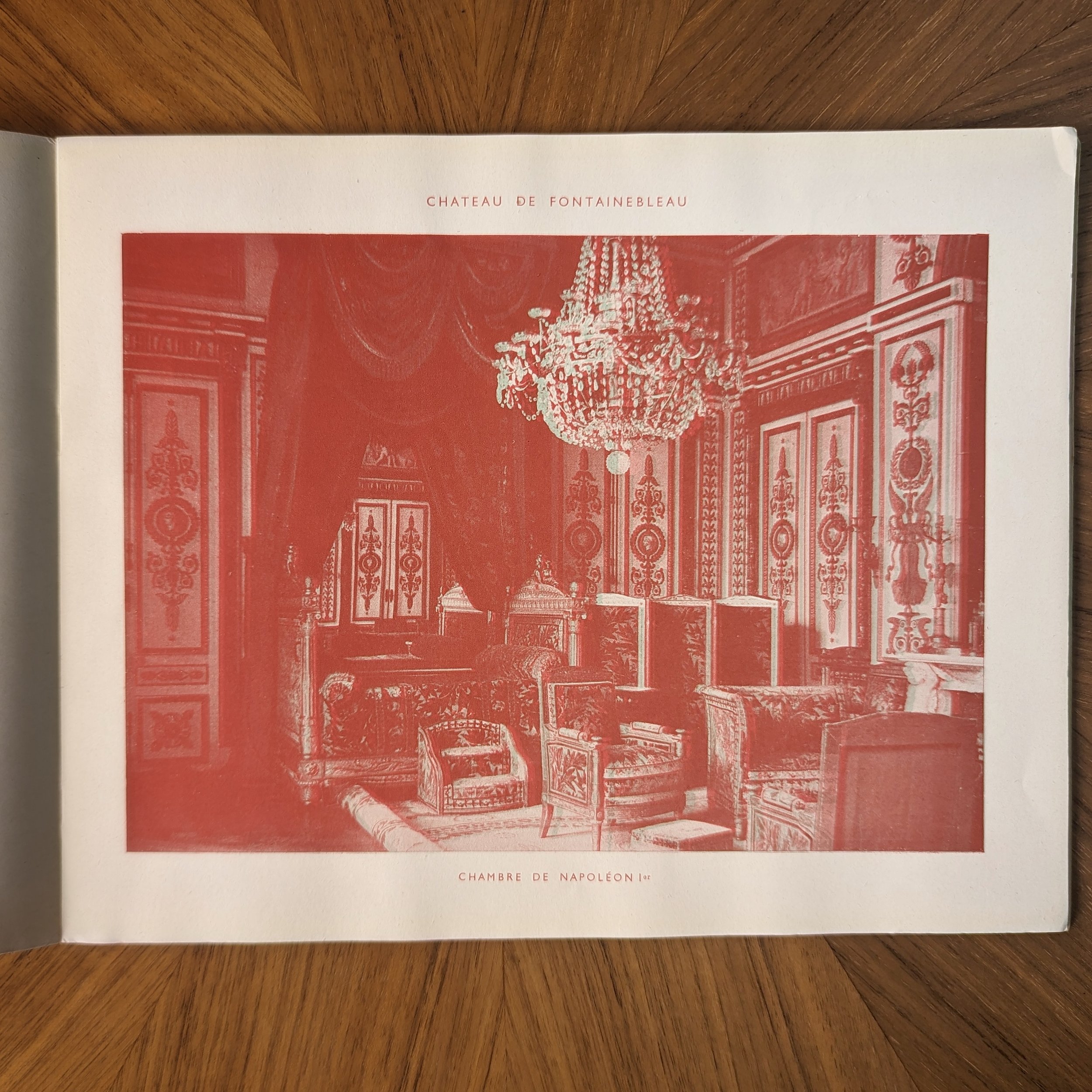






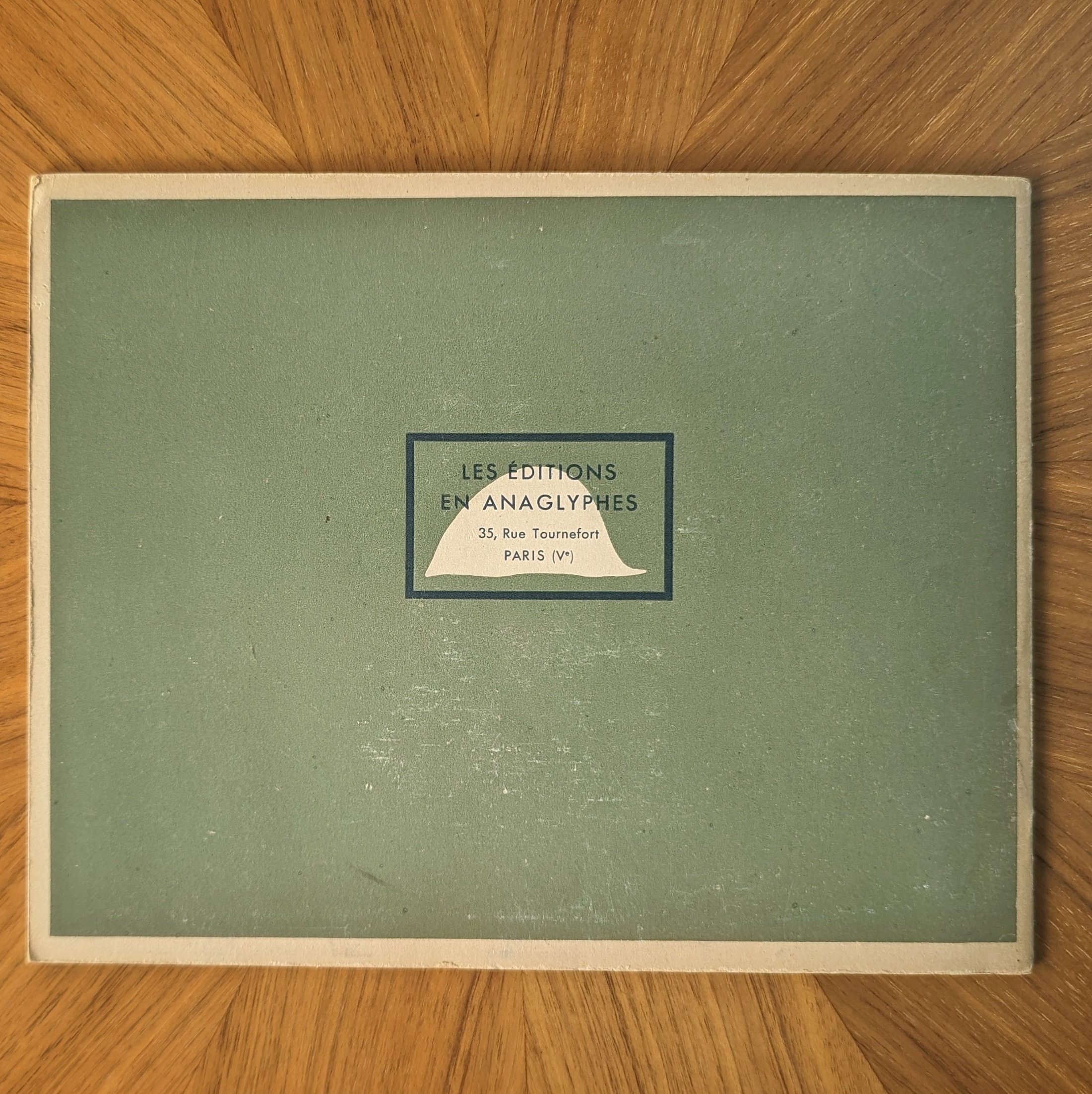
1950s | Cartes Postales Anaglyph Postcards
This is an interesting concept: a set of anaglyph postcards with a pair of 3D glasses attached to each postcard. In theory, it’s a great idea to ensure the recipient has glasses to view the postcard, similar to the 3D greeting cards above. However, since these were intended to be mailed without an envelope, one has to wonder how well the glasses held up during the mail processing and delivery.




1950s | Diana Dors in 3-D
The Camera Studies Club produced a number of “glamour” publications containing risque anaglyph images of women. The books were bundled with a 3D viewer called the Roye-Vala-Scope. Fun fact: In the back of the book, there’s an ad for a separate product called “the first natural vision 3D folding viewer.” That viewer is the same design as the Coronet viewer.
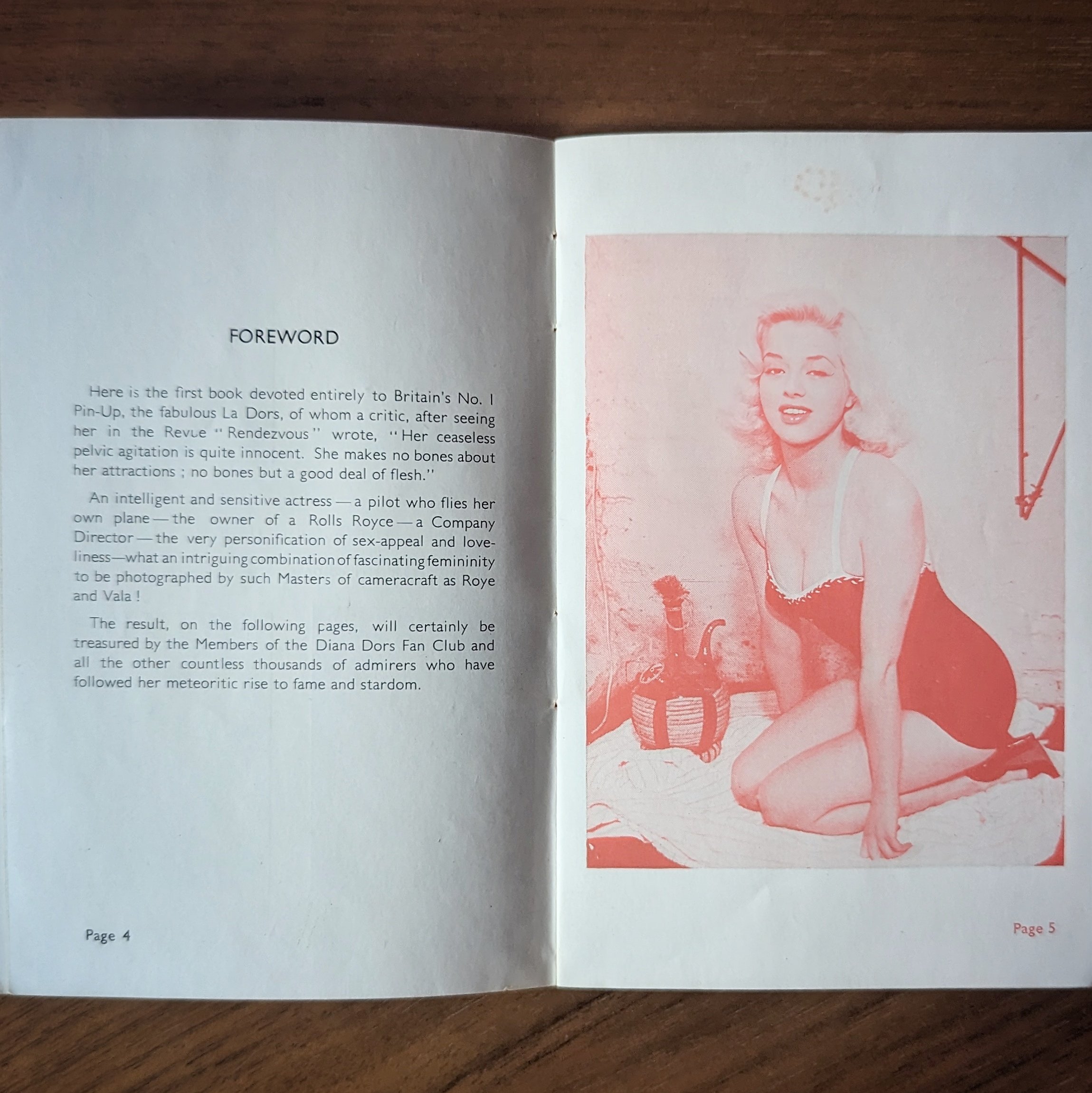



1950s | Muffets Shredded Wheat Thriller-Scope
Muffets Shredded Wheat cereal was invented in 1920 and is still sold today. For their 3D promotion featuring anaglyph circus images, they called their viewing glasses “Thriller-scope.” We can’t help but think of Michael Jackson.
1950s | Roy Rogers 3-D Viewer
Post’s Sugar Crisp cereal ran a promotion where they packaged Roy Rogers anaglyph images along with a 3-D viewing glasses in their cereal boxes. There were 12 sets in total with 4 images in each set (2 cards, with images on both sides.) Roy Rogers was a famous actor, singer, and rodeo performer. He hosted the The Roy Rogers Show on television between 1951 and 1957.
1950s | Tarzan Savage Furty 3D Picture Cards
In 1953, Topps Chewing Gum published the 60-card “Tarzan’s Savage Fury” anaglyph set with red/blue viewing glasses. That same year, they also published the 60-card “Tarzan and the She-Devil” anaglyph set.









1960s | Vintage Anaglyph Hallmark Greeting Cards
These mid-century anaglyph greeting cards from Hallmark have creatively built in the 3D glasses.




1960s | 3-D Girls, A Man’s Magazine with Dimension
We’re asking the same question you are: where’s the 3-D Women’s Magazine full of anaglyph men? You WERE asking yourself that, right? We’ll keep an eye out for it. Meanwhile, here’s the Volume 1, Number 1 issue of 3D-Girls from 1965. It has a section of anaglyphs but also regular photos, short stories, and some pretty interesting articles and advertisements.






